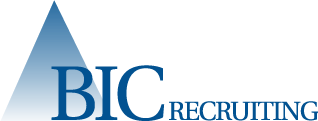Our research has proven time and time again that inside-the-box thinking, rather than outside-the-box thinking, can increase employee performance, profitability and sustainable success for companies. This box serves as the framework for a company’s mission, vision and values, and can be amended as the organization evolves. Each of the four sides of the box — direction, operations, people and engagement — plays a vital role in providing critical definition of the company. Over the course of the previous two editions of BIC, we have covered direction in August, operations in September, and now we are focusing on the third side: people.
Side three: People
The greatest strategies and plans ultimately depend on people to execute them, especially in the industrial services space. In many regards, people are the differentiator and define not only the success but safety of a project. Leaders know that their people are the key to success — but interestingly enough, they don’t always do the things necessary to support, build up and set expectations for their people.
When working with leaders, I always tell them they have two choices when it comes to their people: They can “change the people, or change the people.” It is one of the greatest and biggest decisions leaders are faced with. Yet, leaders become confused about which option they will take. We always recommend starting with “change the people,” as in do the things necessary to help them operate with clear expectations within your organization’s box.
This people strategy starts with having the right people in the right roles. It sounds easy enough, but organizations are still hiring based on the old hiring equation: focusing only on the knowledge, skills and abilities of a candidate. The excuse is that they can do the job and it’s a tight job market, so that is “good enough.” The most advanced and highest-performing companies approach hiring by looking at knowledge, skills and abilities, plus a cultural fit. This means that in addition to a candidate’s experience, they are equally focused on behaviors and the way in which a person works.
Once we have the right people in the company and are aligned with the box, we can focus on the three dimensions of the people side of the box: coaching and development, talent management and team capabilities.
As leaders, we use coaching and development to help our people grow, stay aligned with the organization and feel valued. When they do, employees positively contribute to their organizations and leadership. It’s up to leadership, however, to recognize these talents and elevate employees to a new level of performance through focused and personalized coaching and development.
Talent management focuses on the continuous process that plans talent needs, builds a culture that attracts the very best, ensures that all employees are productive and helps the company retain their best. Talent management is forward-looking and proactive, which means that the organization is continuously seeking out talent and opportunities to increase overall workforce productivity.
Ultimately, organizations are made up of teams that get the work done and drive performance. It is therefore important to understand team capability, which concentrates on ensuring the right people are on the team, working together with a clear purpose and effectively communicating with one another and with other teams. Teamwork creates collaboration to help solve problems and find solutions that produce the best results.
Outcome
When people within a company are empowered, supported and understand how their work contributes, they are more likely to be engaged and productive. This in turn increases overall performance and helps to create sustainable profitability.
For more information, email Deutser at bdeutser@deutser.com or call (713) 850-2105.

